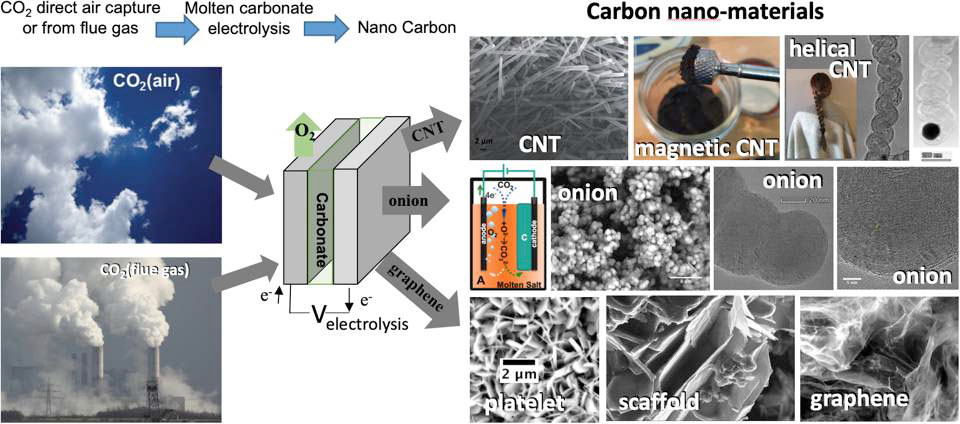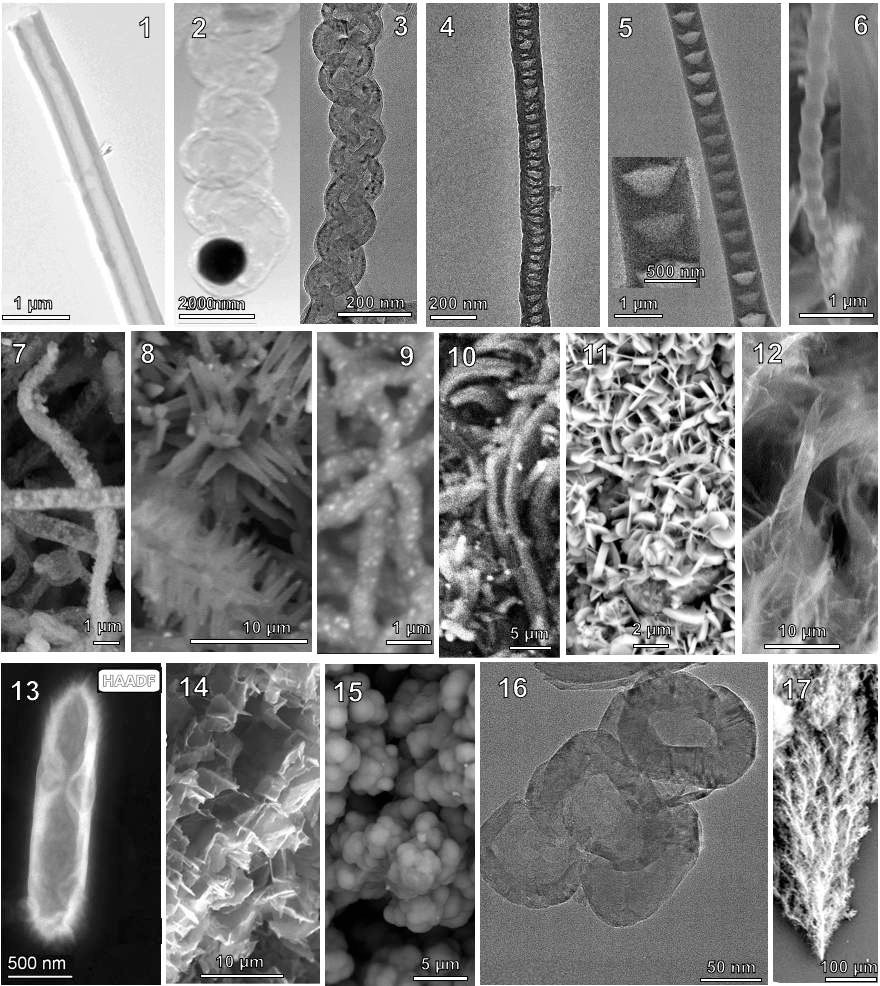| Feb 22, 2022 |
Novel removal process of anthropogenic CO2 results in graphene-based nanocarbons
(Nanowerk News) In 2015, researchers at George Washington University presented a novel Diamonds from the Sky chemistry to transform CO2 into products so valuable and so highly stable that removal of this greenhouse gas to mitigate climate change and stop global warming becomes a 'no brainer'. In this process, which has been termed C2CNT™ (carbon dioxide to carbon nanotube), CO2 is split into its constituent components carbon and oxygen by molten carbonate electrolysis. This process is now called the Genesis Device ™ and uses a melted carbonate salt.
|
Graphene based NanoCarbons
|
|
Unexpectedly, the removed carbons are graphene (single layers of carbons interconnected as hexagons) based nanocarbons with extraordinary properties that can be controlled during the CO2 splitting.
|
|
The C2CNT Genesis Device produces carbon nanotubes (CNTs). CNTs are the strongest of all materials. As shown below, other products are graphene or carbon nano-onions respectively with energy storage and electronic applications or lubrication and EMF shielding applications.
|
 |
| High-yield electrolytic synthesis of carbon nanomaterials from CO2, either directly from the air or from smokestack CO2, in molten carbonate. (Image: S. Licht, C2CNT)
|
17 varieties of new nanographitic carbons made by the GENESIS DEVICE
|
|
The common structures of carbon include graphite and diamond. This month, in two peer-reviewed studies in Catalysts ("Controlled Growth of Unusual Nanocarbon Allotropes by Molten Electrolysis of CO2" and "Controlled Transition Metal Nucleated Growth of CNTs by Molten Electrolysis of CO2"), C2CNT Founder Prof. Stuart Licht’s team presents a new world of carbons, seen below including nanodragons, nanotrees and nanopearls made from CO2 by the systematic investigation of metals, additives and electric currents of the Genesis Device.
|
|
Each carbon structure is built up from advantageous graphene layers, whose unique shapes will determine their properties and uses. All are made from CO2 captured directly (without requiring any pre-concentration) from the air.
|
 |
| 17 varieties of Graphene nanocarbons made from CO2. 1: tube; 2 and 3: single and double helix CNTs; 4: bamboo; 5: fiber; 6: pearl; 7: dragon; 8: flower; 9: Ni coated tubes; 10: belt; 11: platelets: 12: graphene; 13: rod; 14: scaffold; 15 and 16: onion: solid and hollow; 17: tree. (Image: S. Licht, C2CNT)
|
|
C2CNT has been controlled to formed straight, twisted, doped, or highly conductive CNTs. In two very recent peer-reviewed studies in Journal of CO2 Utilization ("Magnetic carbon nanotubes: Carbide nucleated electrochemical growth of ferromagnetic CNTs from CO2") and Materials Today Chemistry ("The green synthesis of exceptional braided, helical carbon nanotubes and nanospiral platelets made directly from CO2"), C2CNT is also used to produce magnetic CNTs (useful for precise drug delivery and catalyst recovery applications), and single and double helices CNTs illustrated above.
|


